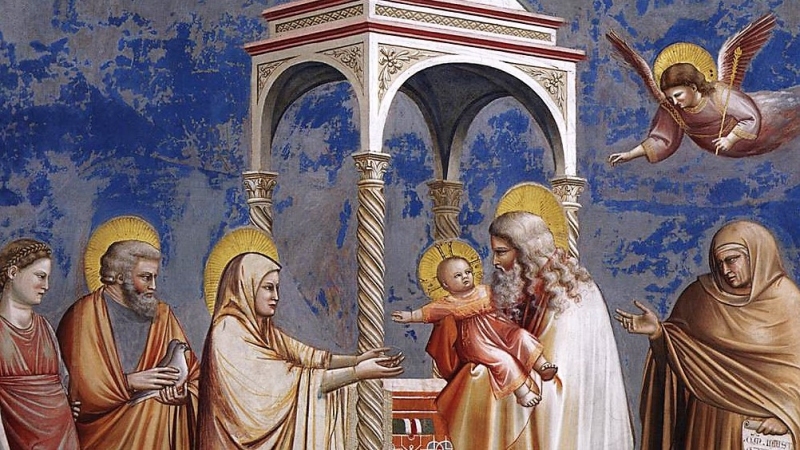The Feast of the Presentation of the Lord in the Temple has also become the Feast of Consecrated Life, because today consecration to God is fulfilled in the consecration of Christ. Consecrated life makes visible, the consecration to God that is that of every baptised person.

I would like to focus on three particularly topical dimensions of this Christian consecration. First: Witnessing gratuitousness: The account of the Presentation in the Temple shows that Jesus’ existence belongs to God. To belong to someone means to be in a situation of dependence, even slavery. But it is not so when belonging is lived towards God, because God lives every relationship with absolute selflessness. God frees those who consecrate themselves to him by allowing them to experience this gratuitousness in which he has created us out of love. Aged Simeon thus recognises in the consecration of this child the gratuitousness of the salvation that God offers us. In our society that no longer needs religion and is increasingly based on commercial relationships, consecrated life is called to be a sign of this gratuity without which there is neither love nor authentic freedom.
Witness freedom! Belonging to God, however, has its own demands. Thus prophesied elderly Simeon to Mary: “This child will be a sign of division. And you yourself, your heart will be pierced with a sword’. If gratuitousness is a path to freedom, it is through stripping, through separations that are sometimes true death. To offer oneself to God by following Jesus is to consent to a form of death to this world in order to live the life of God. Whoever is liberated by Christ can risk life in the gift of self. Mary herself had this experience when she felt the wound in her heart at the foot of the Cross. This wound is a component of love. It frees affectivity from its spontaneous possessiveness and makes it capable of an authentic self-offering. Community life is founded on the contemplation of Jesus offering himself up to the wound in his side on the cross. There is no brotherhood without this freedom of a heart wounded in its self-sufficiency. In a world where there is so much suffering and emotional loneliness, consecrated life is called to bear witness to the freedom given by the love of the Crucified One, the source of the fraternity to which we are all called.
Witnesses of eternal life: God’s mercy in Christ makes known to us from now on the reality of his Kingdom, a paradoxical Kingdom that is experienced within our human precariousness. Our own miseries, experienced as wounds of love, become living sources of compassion and self-denial. Christ’s love is victorious over suffering and death. Faced with humanly hopeless situations, Christians testify to their hope in a life stronger than death. In this hope, eternal life has already begun: “My eyes have seen salvation, a light to enlighten the Gentiles and the glory of Israel his people!” proclaims elderly Simeon. At a time when man seeks to dominate his earthly existence to give himself the illusion of invulnerability, it is possible for those who have based their lives on the reality of the Kingdom to bear witness to a hope that presupposes the vulnerability of a heart of flesh. Consecrated life, founded on values that are not of this world, points to that Day when God will be all in all: come, Lord Jesus! Called to gratuity, freedom and eternal life, let us celebrate in this Eucharist the gift that Christ makes of himself to the Father gratuitously and forever. Let us give thanks to God for our consecration in Christ. May we with Him, for Him and in Him live the gift of Life in God now and forever!
By Fra. Pio Murat OFMCap, General Councilor, CENOC

